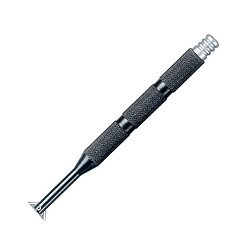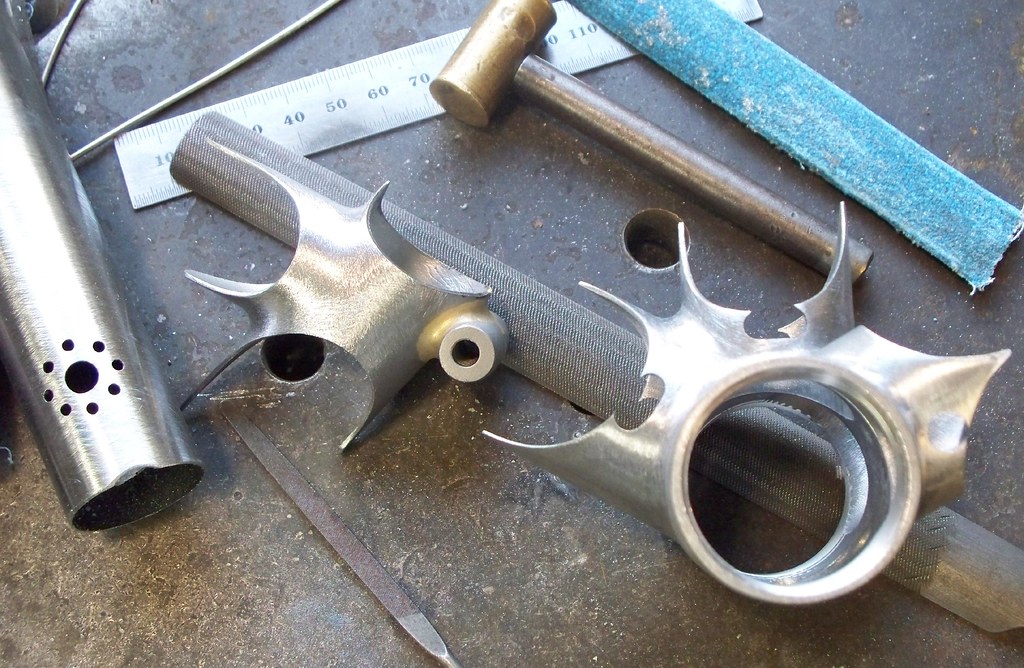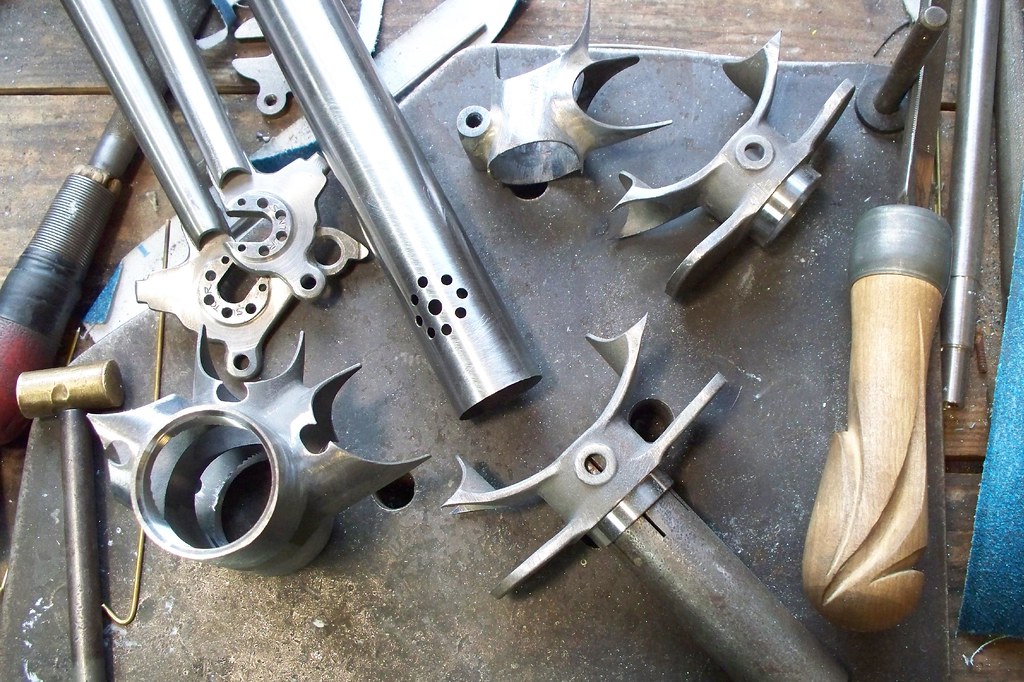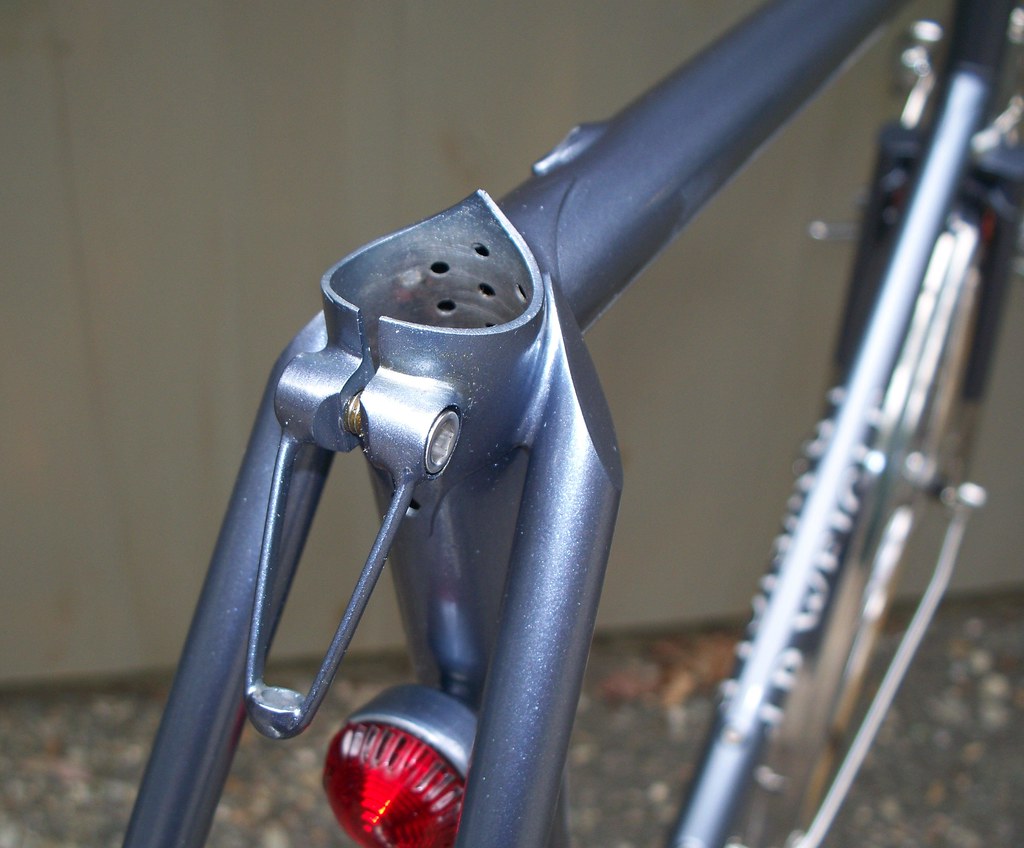I have seen process photos from builders I respect where the top tube or down tube meets the head tube and the vent hole in the head tube (or BB) is quite large, maybe 3/4" diameter. Is there a reason for this? I can see how it would make it easier to shake out a chunk of hardened flux for fillet brazers, and easier to introduce a rust inhibitor inside the (steel) tubes of the completed frame, but I would have thought it best to leave as much material intact in these tube junctions. I know I’m really getting into the weeds here, but I like to dwell on the details. Always trying to increase my understanding and learn more.
I personally make them pretty small (1/4" typically) as I’ve found over the years that really big vent holes cause me to end up with a lot more distortion of the BB shell/head tube. It’s not the end of the world but it’s annoying, and I could give a crap about saving 5g.
-Walt
Thanks Walt. It makes sense that a bigger hole will lead to more distortion. That’s the last thing I want. I sure appreciate and identify with your common sense approach to framebuilding. We actually met when you still lived in Boulder. I lived in Arvada and drove up to talk to you about framebuilding. Circa 2012.
I don’t know if there’s a best diameter but I tend to make them pretty big on my Ti frames for purging purposes.
For steel I think it’s more about venting and maybe drainage so no water or moisture gets trapped inside. I have always placed them on both ends but I’ve seen other builder’s frames only vented on one end and don’t understand if that’s a mistake or for some purpose.
Also there are specs for the hole diameters needed on Shimano Di2 frames. I believe the DT/BB hole needs to be 3/4” to fit the junction box.
Fair warning: Vent holes are known to propagate cracks in certain locations… so smaller the better on forks crowns. I’ve also heard of cracking from holes at the head tube and of course water bottle bosses.
Always debur the holes!
@Neuhaus_Metalworks showed me his prison shank internal hole deburing tool
It’s still hard to get the concave edges of the bur, but this is just another tool to use when you get tired of your other deburring tools ![]()
Early on I made some really big vent holes on a racey bike for a friend, like maybe 1" hole saw chops or something on the HT/DT HT/TT, and that lead to one of the few frame failures that I have had. I chatted with some other builders about it at the time and I’ve been on the all 1/4" train since then unless I need to clear a Di2 box at the BB as Whit pointed out. Also learned at that time that cracks can propagate from vent holes that are not deburred so I will echo that as well.
I will admit, when I first learned about this new forum for framebuilders, I was skeptical: “Do we really need yet another framebuilding forum?” So I create my first post. And what happens? Within 24 hours, three professional builders who I respect and follow respond to my post!
Yeah, I’m on board now.
Meriwether’s not respectable! And neither am I! If digital cameras were around in the days of IGSSC you’d refuse to speak to either of us.
Adam’s very respectable. I even have a recent photo.
-Walt “definitely did not dry hump XC national champ with a leg taken from an elk carcass while drunk”
If I were old enough for IGSSC I’d be in the same boat. Ha!
I couldn’t give a crap about the 5g either, but I am considering attempting internally routed hose through the BB. Do you have any best practices for this? (Photo for illustration only - not my work)
I have a no internal anything policy (except dropper ports in the seat tube) so I can’t help unfortunately.
-Walt
Rob English uses some big vent holes. He’s very into light weight, so that’s probably the reason. I’d be curious to hear his take on structural issues since his education was mechanical engineering. Would there tend to be less overall distortion with fillet brazing vs welding?
How do folks debur the inner edge of very small vent holes? I’m thinking of 1/8" or so vent holes in the stays or fork blades near the dropouts. Or is that a structurally safe place for a vent hole not to be deburred? Pretty thick material there, at least on tapered blades/stays.
I don’t bother to try to deburr those little ones. Never had a problem, the material is pretty thick there usually.
-Walt
I wonder why he does that. Looks like a lot of work for something nobody will see.
-Walt
Yeah that’s another level. Not sure of what, but another level of something.
-Walt
#fussyframebuilder ![]()
Ok just so I’m clear, y’all are saying 1/4 inch is big enough for the ST-BB vent hole as well? I’ve been making em bigger because I assumed maximum drainage was ideal, but I’d prefer to minimize warpage if that’s enough hole. I typically remove the seat post to let the frame dry out when i’ve been out poopie prancing, but that isn’t quite as easy with a dropper (but at least there’s the dropper port for ventilation).
Water will go through a 1/4” hole real well.
-Walt






